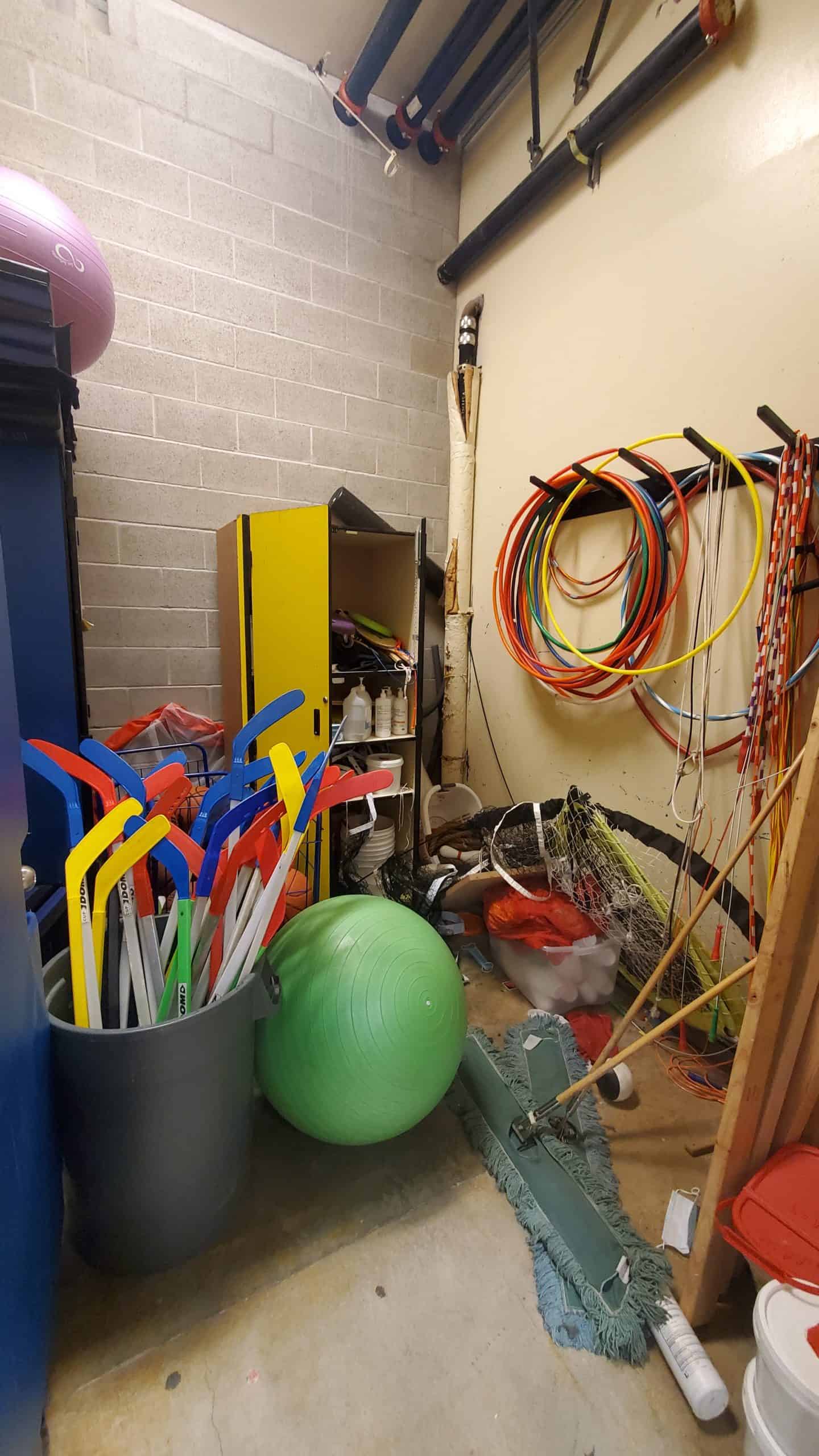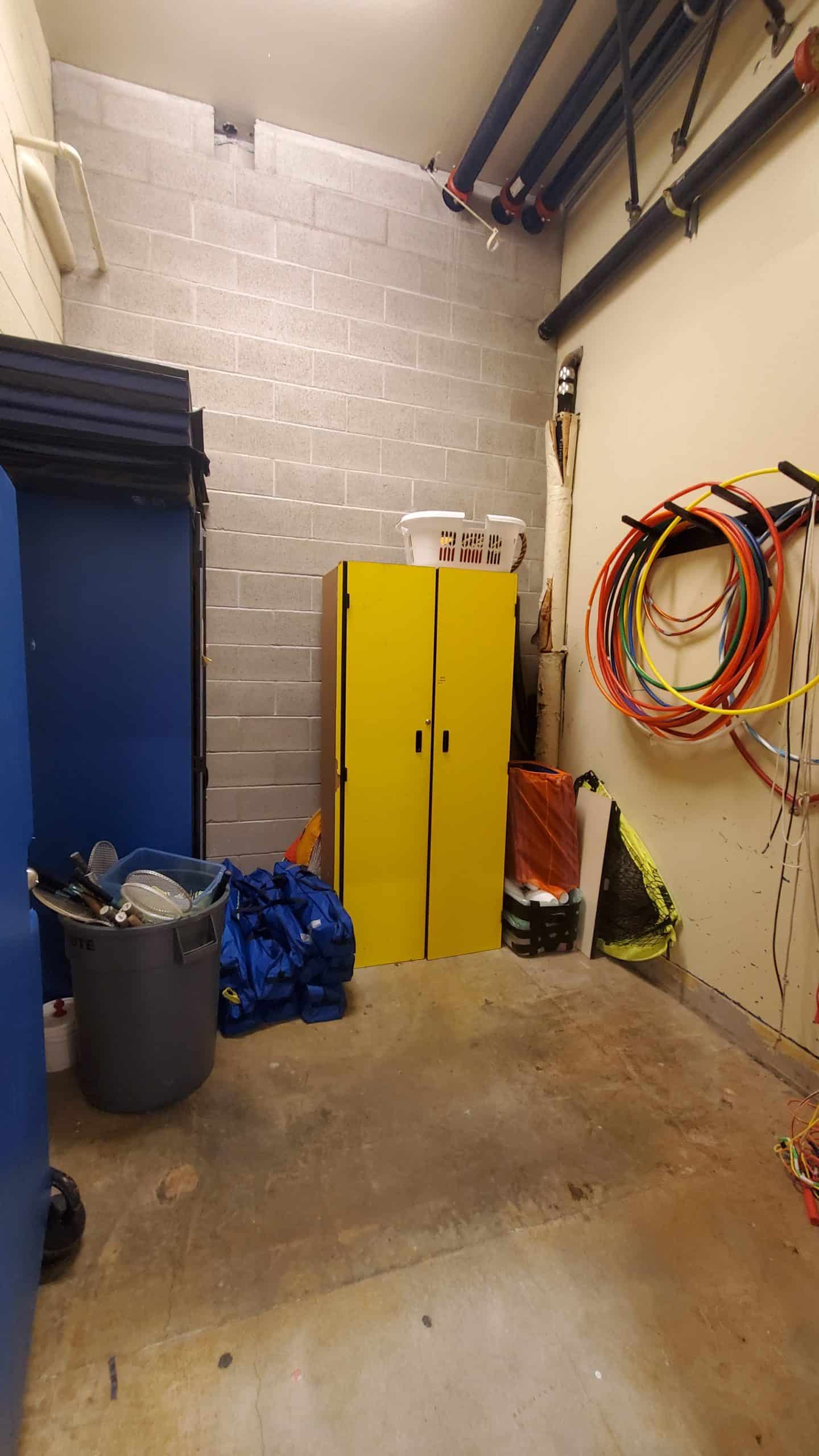
Caring for Space
It has become wildly apparent that neglect leads to destruction. The planet, the houseless, bodies, trauma, young people. ( I could add the elderly or just ‘people’ there as well, but older people tend to have and want to keep, and don’t want upheaval to complicate things. They also typically don’t have the energy.) When I returned from my two month leave, the storage closet and mat room were in shambles. Two of my female students told me how they organized the equipment closet for me, then found it a mess the next. They cleaned it again, and found it a mess again. As I listened to their story, I playfully asked, “And then what happened?” We just gave up. I smiled, thanked them for their efforts, and said, “Welcome to [Physical] Education.”
I get to school early, at least an hour before our directed 7:30a start time. I need time for myself, to move and notice the left conditions of things. The starting point is never the same. Not with my body, not with the environment. There is a system of inspections that take place. We make continuous, sincere checks on that which we care about. What is the current condition, what resources do we have to either solve or investigate the problem, and what conflicts are at play for maintaining order and ownership?
I knew there would likely be some organizational issues after my absence. A string of subs, all temporary, all stressed to the point of flight and checking out and doing the least possible, do not have the attentional and energetic reserves to handle 40ish kids in a large, open setting (let alone 240 per day). I popped into the school on a Weds during Spring Break. The storage closet kids (and supervisors) had access to looked like this:

Upon seeing it, I immediately know how those eight weeks had went.
The strange part about it was that the administrator that came to see me my first day back told me how things had gone “really well” and that I had “good sub plans”. Every other person who actually walks through the gym regularly, however, greeted me with a “Thank God you’re back” , or, “Finally some structure and routine..”. We cannot take care of that in which we refuse to see. When you are struggling to survive, reality gets splintered into manageable bits. We put blinders on to convince ourselves that everything’s okay.
After about an hour, the closet was cleared and readied for that badminton unit we would be starting when classes resumed.

What stays, what goes, what is salvageable, what gets trashed… based on condition, available space, and organizational/storage needs.
The beauty of badminton (apart that it is well liked, easy to accommodate, and not too demanding) is that it partitions the space into small group sections. We fit nine courts into the size of a varsity basketball court. The space allotted is a little less than half of an actual badminton court. This means I can accommodate nine groups of four (with magic ways to accommodate 48 instead of 36), and converse with, assess, ask questions, engage, interact with, and support ready-made mini communities (divided by game). The spatial organization allows me to note friend groups, communication styles, likes, competitive levels, and skills so that I can make positively challenging pairings. I get to know them.
The night before my return, I had an idea: what if I had each class put up their nets, take them down, and put them away? Even though it would be played every period, I wanted to try and standardize time. This tiny adjustment made a world of difference. 1. I could assess how the group worked together (or didn’t), 2. I could observe what was most meaningful to the group (socializing, getting ‘the best’ racquets), 3. It allowed auto-regulation of their readiness level (slow to fast start) 4. It revealed any leaders or the social hierarchy of the group, 5. It gave them ownership of their equipment and space, 6, It showed me how well they retained knowledge and know how (Day 2 of putting the nets up should be more efficient than day 1) and 7. It made them realize that they had responsibilities in order to be able to play.
Something needs to be done in order to play.
You are received into a clean, safe, and protected space. You hold an important role in keeping that place clean, safe, and protected. In accepting this role, you will continue to have access to this special place and special experience.
When we finish play, and if we want to keep playing, things need to be returned to the condition in which they were given.
There are many assumptions that go along with this. The conditions of being able to play, wanting to return to play once it’s over, and having stuff and space considered special and/or desirable all have to actually exist.
These fundamental concepts bled into the next unit which was wrestling/ relaxation. The last five minutes of each class was reserved for wiping down the mat area they used. In absolving myself from ‘doing it all’, I inadvertently offered them a stake in the conditions in which they were asked to learn and/or perform. A steady and distinct behavioral shift occurred. They had pride in how quickly they could set the nets up, and how fast they could take them down. Those who recognized the mats could afford them activities any other setting might otherwise not, took their time to wipe them down well.
What opportunities do we give kids to learn to care for things? For themselves? What behaviors do we put up with? What behaviors could we instill? Being accountable doesn’t have to be a threat, a warning out of fear. It can be a desire, stemming from the belief that you matter, and can help make the difference you seek.



